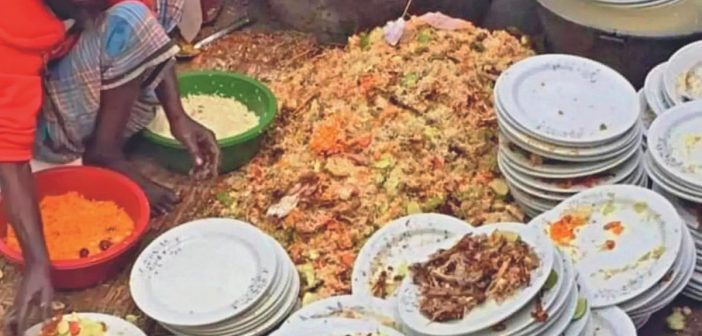As we observe World Food Day, it is crucial to address the alarming issue of food wastage in India, a country that bears the paradox of millions going hungry while substantial quantities of food are discarded each day. The statistics surrounding food wastage in India are staggering, and the need for effective prevention measures has never been more urgent.
The Scale of Food Wastage in India
India is one of the largest producers of food globally, yet it also stands as one of the largest contributors to food waste. According to recent estimates, around 67 million tonnes of food are wasted annually in India, which equates to about 40% of total food production. This wastage not only represents a significant loss of resources but also has profound implications for food security, environmental sustainability, and economic stability.
Economic Impact
The financial implications of food wastage in India are staggering. It is estimated that the annual economic loss due to food wastage is approximately ₹92,000 crores (around $13 billion). This figure encompasses the costs associated with food production, transportation, storage, and disposal. Additionally, wasted food represents a loss of labor, water, and energy resources, all of which contribute to a substantial economic burden.
The Causes of Food Wastage
Understanding the root causes of food wastage is essential for devising effective solutions. The factors contributing to food waste in India can be categorized as follows:
1. Supply Chain Inefficiencies
Inefficient supply chains, including inadequate storage facilities and poor transportation infrastructure, lead to significant food losses. An estimated 30% of fruits and vegetables perish before reaching consumers due to lack of proper refrigeration and handling.
2. Consumer Behavior
In Indian households, food wastage is prevalent due to over-purchasing, poor meal planning, and lack of awareness regarding portion sizes. It is estimated that households waste approximately 50 kg of food per year on average. Cultural factors, such as the expectation to serve large quantities of food during gatherings, exacerbate this issue.
3. Market Dynamics
In the marketplace, strict aesthetic standards lead to the rejection of perfectly edible food that does not meet visual expectations. Retailers often dispose of products that are slightly blemished, contributing to avoidable waste.
4. Lack of Awareness
There is a general lack of awareness about the extent of food wastage and its consequences. Many consumers remain oblivious to the environmental impact of food waste, including greenhouse gas emissions associated with decomposing food.
The Consequences of Food Wastage
The consequences of food wastage extend far beyond economic losses. Key implications include:
- Food Insecurity: With around 190 million people in India facing hunger, reducing food waste could help bridge the gap in food availability. The amount of food wasted annually could feed millions of people and significantly improve food security.
- Environmental Impact: Food waste contributes to approximately 8-10% of global greenhouse gas emissions. In India, this waste, when decomposed in landfills, releases methane—a potent greenhouse gas—into the atmosphere, exacerbating climate change.
- Resource Wastage: The water and energy resources used in food production are wasted alongside the food itself. For instance, it takes around 1,800 liters of water to produce just 1 kg of rice. Therefore, wasting food also means wasting precious water resources.
Strategies to Prevent Food Wastage
To combat food wastage effectively, a multi-faceted approach is necessary. Here are some actionable strategies:
1. Strengthening Supply Chains
Investing in better storage and transportation facilities is crucial. Cold storage solutions, improved transportation networks, and better supply chain management can significantly reduce post-harvest losses. Government incentives for private investments in infrastructure can facilitate these improvements.
2. Public Awareness Campaigns
Awareness campaigns targeting consumers, farmers, and retailers can educate stakeholders about the consequences of food waste and promote best practices. Initiatives can include workshops, social media campaigns, and educational programs in schools to instill responsible consumption habits from a young age.
3. Food Recovery Programs
Developing partnerships with NGOs and food banks can facilitate the redistribution of surplus food to those in need. Implementing systems that allow restaurants, hotels, and retailers to donate unsold food can help alleviate hunger while reducing waste.
4. Policy Interventions
Government policies that encourage sustainable practices in food production, distribution, and consumption can play a vital role. This includes regulations that minimize aesthetic standards for food products and incentivize businesses to implement waste reduction strategies.
5. Technological Innovations
Investing in technology that enhances food preservation and waste reduction can lead to significant improvements. Innovations in packaging, smart inventory management systems, and apps that connect consumers with surplus food can help bridge the gap between supply and demand.
Conclusion
The issue of food wastage in India is a complex problem that demands urgent attention. As we mark World Food Day, it is imperative that stakeholders across all sectors—government, industry, and civil society—collaborate to implement sustainable solutions. By addressing the root causes of food waste and fostering a culture of responsible consumption, India can make significant strides towards improving food security, conserving resources, and protecting the environment.
Eliminating food wastage is not just an economic imperative; it is a moral obligation to ensure that no one goes hungry in a nation where food production is abundant. Together, we can cultivate a future where food is valued, cherished, and utilized to its fullest potential.






